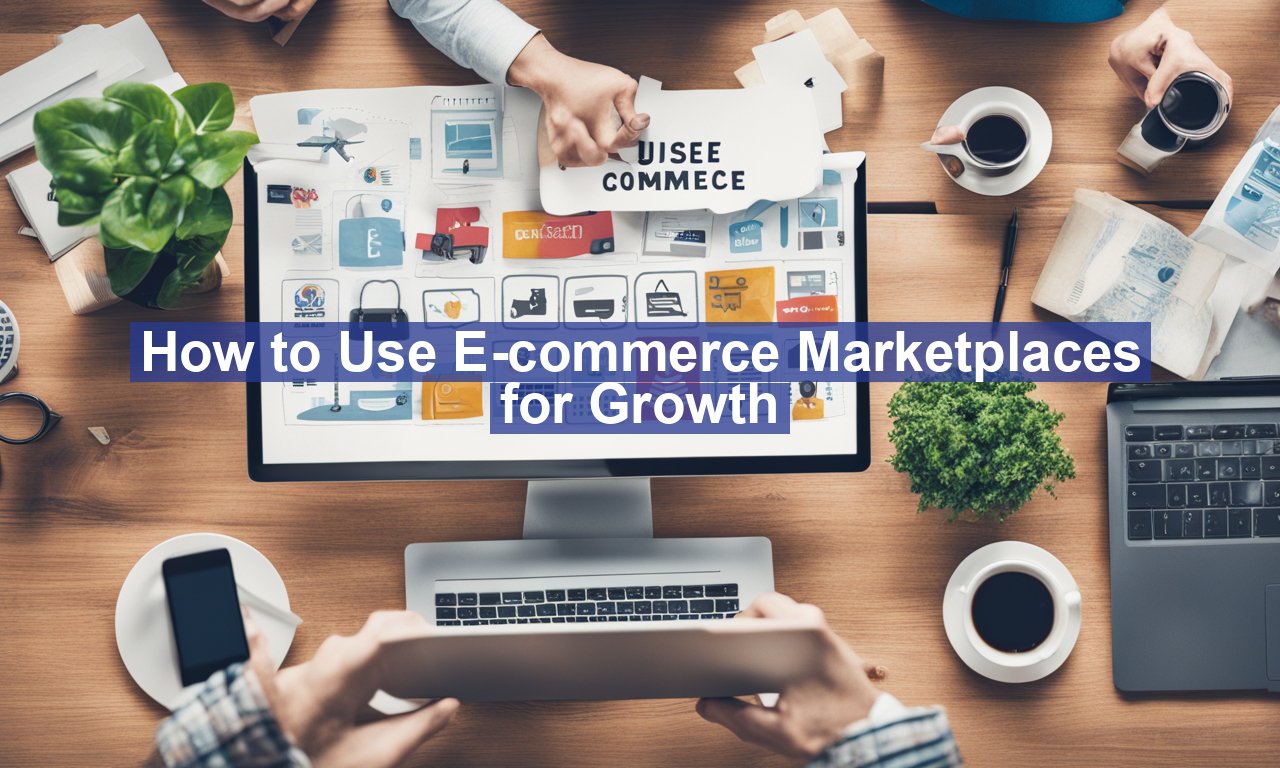How to use E-commerce marketplaces for growth, When we think of today’s thriving online marketplace, it’s akin to a bustling digital bazaar where opportunities for brand exposure and revenue growth abound. E-commerce marketplaces like Amazon, eBay, and Etsy have revolutionized how businesses reach customers, enabling even the smallest ventures to compete on a global stage.
But, what if you’re unsure how to leverage these platforms for increased business growth? That’s exactly what we’re unraveling today, offering you a clear roadmap to make the most out of how to use E-commerce marketplaces for growth. Stay with us as we dive into practical strategies that not only attract customers but create lasting brand value.
Understanding the Dynamics of How to Use E-commerce Marketplaces for Growth
E-commerce marketplaces operate as intermediary platforms, connecting buyers and sellers in a seamless online environment. Each platform attracts a different demographic with unique purchasing behaviors. For instance, Amazon is renowned for fast shipping and a broad selection, while Etsy is celebrated for handmade and vintage items. Knowing these differences is crucial in deciding where your products might gain the most traction.
- Amazon: Offers immense reach and logistical prowess with the Fulfilled by Amazon (FBA) program.
- eBay: Known for auction-style sales, which can be ideal for niche products.
- Etsy: Best for custom, handmade, or vintage items appealing to a more niche audience.
Understanding these dynamics will help you tailor your strategy to align with the strengths of each marketplace.
Optimizing Product Listings for Maximum Visibility
Once you’ve chosen the right platform, the next step is to optimize your product listings. This ensures your products aren’t buried under endless search results. Here’s how you can do it effectively:
1. Craft Compelling Product Titles and Descriptions
Your product title acts as a magnet that pulls the interest of potential buyers. It should be descriptive, keyword-rich, and succinct, encapsulating key features of the product. For instance, instead of “Handmade Vase,” use “Rustic Handmade Ceramic Vase – Eco-Friendly, Blue & White Floral Design.”
2. Prioritize High-Quality Images
Images are often the tipping point in a purchase decision. Ensure your images are high-resolution, showcase the product from multiple angles, and highlight any unique features. Each image should help the customer visualize the product’s size, color, and use.
3. Implement SEO Best Practices
Incorporating SEO best practices into your product descriptions can significantly enhance visibility. Focus on relevant keywords, meta tags, and alt descriptions for images to improve your product’s ranking in search results.
Leveraging Customer Reviews for Credibility
Positive reviews can be powerful endorsements that build trust and drive sales. Here’s how to encourage positive feedback:
- Provide Excellent Customer Service: Respond promptly to inquiries and resolve any issues amicably to foster goodwill.
- Follow Up on Purchases: Send a courteous follow-up email asking for feedback and offering assistance if needed.
For more about the impact of customer reviews on online buying behavior, read this insightful report.
Adopting Effective Pricing Strategies
Competitively pricing your products can be a crucial factor in attracting potential buyers. Here’s what to keep in mind:
1. Conduct Market Research
Analyze what your competitors are charging for similar items and adjust your pricing strategy accordingly. This doesn’t necessarily mean being the cheapest option, but rather offering the best value for the price.
2. Utilize Dynamic Pricing
Dynamic pricing allows you to adjust prices based on current demand, time of day, or season. Tools like Repricer Express make implementing dynamic pricing strategies seamless, promoting greater competitiveness.
Exploring Advertising Options
Most e-commerce platforms offer internal advertising options to boost your product visibility. For example:
- Amazon Sponsored Products: Enhances visibility with pay-per-click ads showing your items in search results.
- Etsy Promoted Listings: Places your listings at the top of search results.
- eBay Promotions Manager: Creates special offers and discounts to attract more buyers.
Investing in these advertising options can significantly boost product visibility and sales.
Expanding Globally with Minimal Barriers
One of the most significant advantages of using e-commerce marketplaces is the ability to reach an international audience with relative ease. Here’s how to tap into global markets:
1. Understand Local Market Preferences
Research the cultural preferences and purchasing behaviors of target international markets to tailor your offerings effectively. A product that sells well in the U.S. may need adjustments for appeal in European or Asian markets.
2. Simplify Shipping and Handling
Take advantage of marketplace-provided logistics solutions. For instance, Amazon’s FBA program handles international shipping complexities, allowing you to focus on growing your business.
To delve deeper into expanding globally, this resource on global e-commerce strategies offers valuable information.
Building Brand Trust and Loyalty
Finally, while marketplaces provide a platform, building a strong brand requires consistent effort beyond just listings:
- Maintain Brand Consistency: Ensure your brand messaging, colors, and tone are uniform across all platforms.
- Engage with Customers: Build relationships through social media and newsletters, offering exclusive insights and promotions.
By blending these steps into your marketplace strategy, you can create not only an impressive online presence but also a thriving e-commerce business that stands the test of time. With the right approach, these platforms don’t just serve as sales channels but as powerful engines propelling your growth and success.


